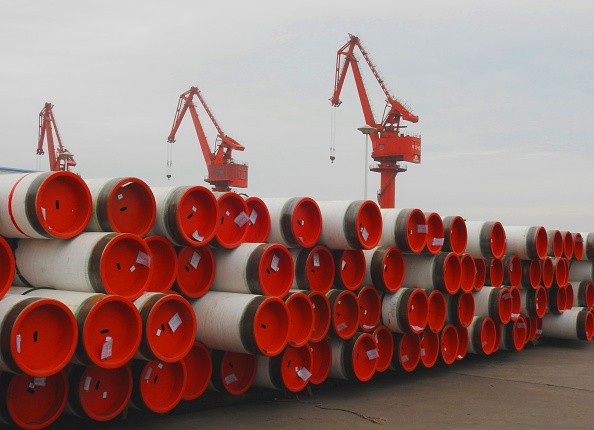China is set to produce more steel this year but mostly for domestic use, amid efforts to reduce its output to address steel overcapacity.
Citing a recent report by BMI Research, CNBC reported that about 825 million metric tons of crude steel are expected to be produced by China in 2017, an increase of 0.5 percentage point from last year's, but 87 percent of these will be used in the country.
"Despite Western fears of steel dumping, increased production of Chinese steel will serve domestic demand more rather than flood international markets in 2017," BMI said in the report.
As China's economy shifted from dependence on industrial exports to more home-grown demand, the country's steel sector has been urged to consolidate production to avoid surplus. At the same time, China's economic development is also dependent on the growth of the country's real estate and construction sector.
BMI noted the trend for increased steel production for domestic use as the monthly average output from August to October increased by 3.6 percent year-over-year, compared to the monthly average export declines of 17.5 percent from the previous year. In November, China's steel inventories, in proportion to production, dropped to 8.2 percent.
"This is because continued Chinese fiscal support to the construction sector has buoyed domestic industrial metal demand, especially through public-private partnerships in public infrastructure such as airports, water, rail, power and roads and bridges (that will) continue at least until the end of 2017," BMI added.
BMI predicts that the surplus global steel market will be reduced from 10.9 million tons in 2016 to 3.2 million tons in 2017, as a result of increased demand in China, both the largest steel producer and consumer in the world.
Investment bank Morgan Stanley agreed with the outlook, citing a recent report which said that the overall demand for steel is "stable and improving."
"Infrastructure spending has been increasing, while reduced property inventories in lower-tier cities should result in a rise in new starts. Globally, many regions are showing signs of improved demand, from the economic recoveries in Brazil and India to (U.S. president-elect Donald) Trump's infrastructure plans for the U.S.," the investment bank added.
This development is a reversal of the overcapacity in recent years, in which China was criticized for dumping steel into the global market, and the decline in prices.
This year's improved outlook is expected to raise steel prices. In China, the price of steel has already gained 60 percent.
Anticipating Trump's infrastructure plan, the prices of raw iron ore have also doubled.
Meanwhile, China cut production to address overcapacity, leaving other factories idle.
Morgan Stanley noted that as China was forced to reduce production, the return on equity in the global steel sector may rise to 12 percent by 2020, up from 2.9 percent in 2015.
China may also reach its 150 million metric ton permanent capacity cut target by 2020, exceeding this year's target of 45 million tons, Morgan Stanley said.
The merger between Baosteel Group and Wuhan Iron and Steel, and regional consolidation plans, indicate that the country may attain improved fundamentals in the next three to five years, the bank added.
The steel stocks in China, India, Japan and Brazil are 20 to 40 percent more advantageous, compared to those in the U.S., Morgan Stanley said. Its top picks include Angang H & A and Maanshan H in China; U.S. Steel, AK Steel and Steel Dynamics in the U.S.; and ArcelorMittalSA and SSAB in Europe.
Standard and Poor's, a ratings agency, however, said that the domestic steel industry may experience "short-term pain" amid cash flow issues and debt.



























